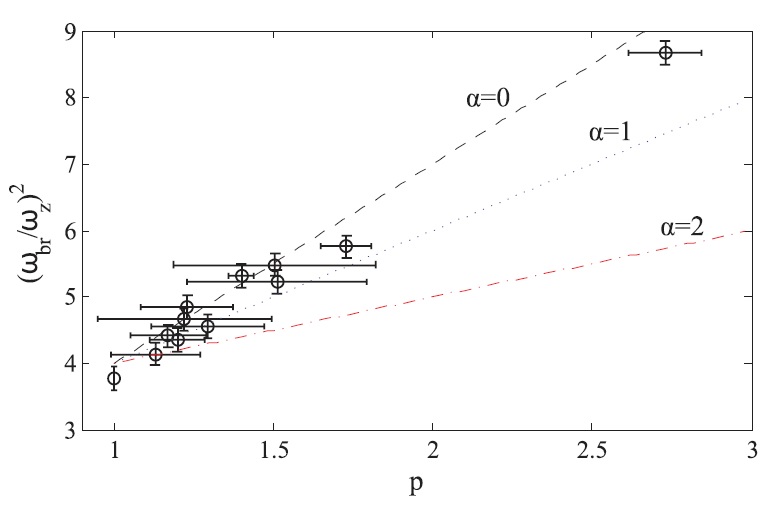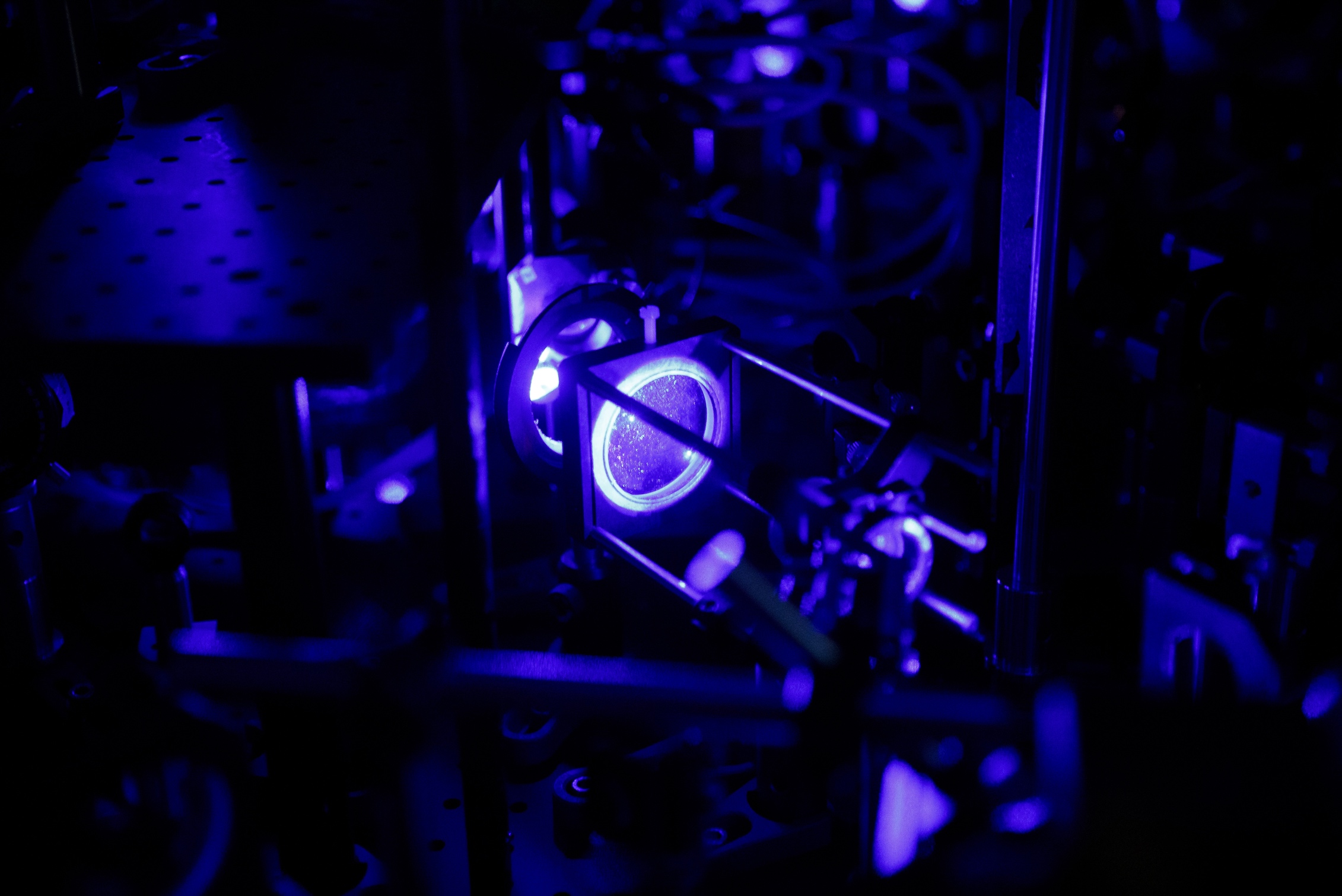Gravitational-like interaction in tabletop experiment
If large OD systems are of key importance to study cooperativity, we demonstrated that in the other limiting case of small OD, the light is linearly absorbed and can initiate an effective long-range interaction. With two counter-propagating laser beams, the long-range interaction is attractive. It is a rather unusual phenomenon since, in commune tri-dimensional systems, such as magneto-optical traps, the attractive force is masked by a stronger repulsive force, due to photons’ multiple scattering. Nevertheless, we were able to experimentally observe the attractive long-range force, in a reduced effective one-dimensional system (see Figure) [1]. This was one of the very few tabletop experiments mimicking gravitational-like interaction. Soon after, we proposed to generalize our method to two-dimensional where a zero-order phase transition toward a collapsed phase is predicted [2]. We found experimentally that collapse is a very fragile phenomenon and is replaced by a rich attractive/repulsive competitive dynamic when the two-dimension criterion is not fulfilled [3]. We also found that a collective dynamic might also exist, leading to single-particle Brownian motion [4].

[1] M. Chalony, J. Barré, B. Marcos, A. Olivetti, and D. Wilkowski, “Long-range one-dimensional gravitational-like interaction in a neutral atomic cold gas,” Phys. Rev. A, vol. 87, no. 1, p. 013401, Jan. 2013, doi: 10.1103/PhysRevA.87.013401.
[2] J. Barré, B. Marcos, and D. Wilkowski, “Nonequilibrium Phase Transition with Gravitational-like Interaction in a Cloud of Cold Atoms,” Phys. Rev. Lett., vol. 112, no. 13, p. 133001, Mar. 2014, doi: 10.1103/PhysRevLett.112.133001.
[3] V. Mancois, J. Barré, C. C. Kwong, A. Olivetti, P. Viot, and D. Wilkowski, “Anisotropic long-range interaction investigated with cold atoms,” Phys. Rev. A, vol. 102, no. 1, p. 013311, Jul. 2020, doi: 10.1103/PhysRevA.102.013311.
[4] V. Mancois, B. Marcos, P. Viot, and D. Wilkowski, “Two-temperature Brownian dynamics of a particle in a confining potential,” Phys. Rev. E, vol. 97, no. 5, p. 052121, May 2018, doi: 10.1103/PhysRevE.97.052121.

